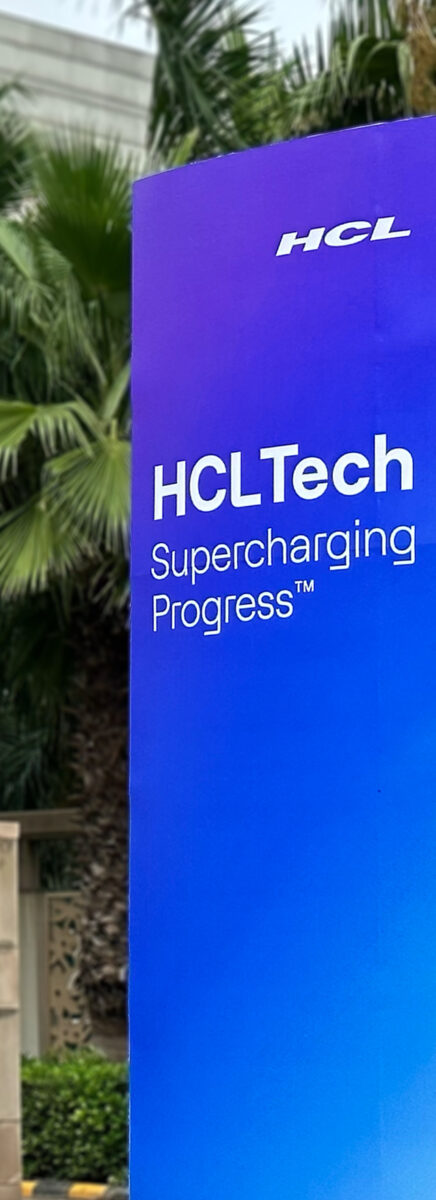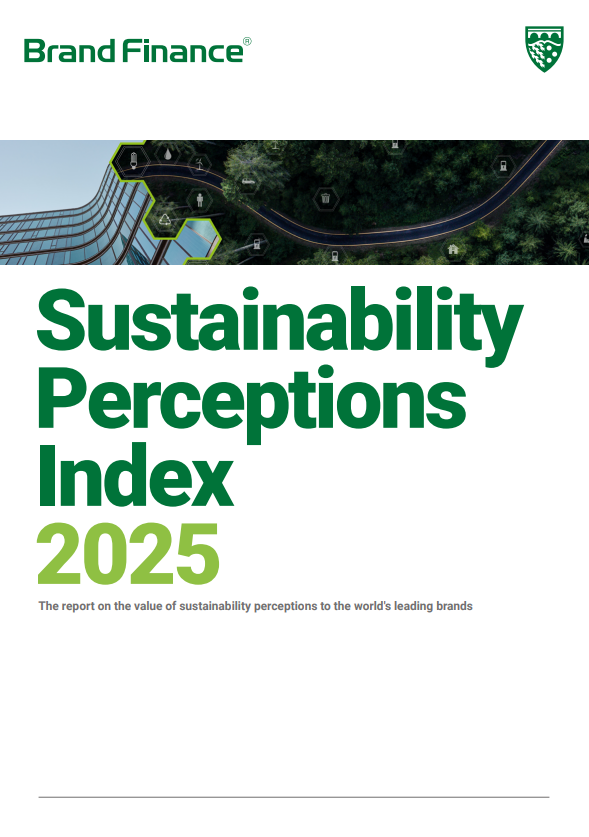This article was originally published in the Brand Finance Sustainability Perceptions Index 2025 report

Global Head of
Sustainability,
HCLTech
Over the past two decades, the adoption of Environmental, Social, and Governance (ESG) frameworks has evolved from a niche concern to a global imperative. This shift has been driven not only by growing environmental and social awareness but also by a surge in regulations mandating sustainability disclosures. Governments, investors, and consumers alike are demanding greater transparency and accountability from businesses.
However, as ESG reporting becomes more widespread, a critical challenge has emerged: the gap between actual sustainability performance, how it is communicated, and how it is perceived.
Insights from the 2025 Sustainability Perceptions Index
The 2025 Sustainability Perceptions Index by Brand Finance brings this issue into sharp focus. It highlights the growing importance of aligning sustainability performance with communication and perception.
The report raises two fundamental questions:
- What is the right balance between a company’s sustainability performance and its communication of that performance?
- How can companies ensure that market perceptions align with their actual performance?
Let us explore these questions in depth.
Communicating Sustainability:
Why Honesty Is the Only Sustainable Strategy
In the long run, the only viable strategy for communicating sustainability is to do so honestly and transparently. The very essence of sustainability is about long-term thinking—building systems, practices, and relationships that endure.
In today’s hyper-connected world, where information travels at lightning speed and every stakeholder has a voice, dishonesty is quickly exposed. The days of opaque supply chains and unchallenged corporate narratives are over. Social media, citizen journalism, and digital activism have democratized information and scrutiny.
Companies that adopt transparent practices and accurate claims are poised to thrive in a competitive market. Embracing these values can lead to greater consumer trust, regulatory goodwill, and a solid reputation. The increase in lawsuits against companies accused of greenwashing underscores the importance of authenticity in sustainability efforts.
While it may be tempting to adjust metrics or selectively feature positive data to gain an edge, focusing on genuine, measurable progress is far more beneficial in the long run. Sustainability in branding offers consistent long-term value when it is rooted in authenticity and a commitment to continuous improvement, backed by verifiable real-world impact.
Embracing this philosophy can help companies avoid the pitfalls of greenwashing and build lasting credibility.

Addressing Greenhushing:
The Case for Effective Communication
Many successful companies have demonstrated that sustainability is compatible with business excellence. They have integrated ESG into their core strategies, fostering innovation, resilience, and growth. This success demonstrates that sustainability enhances value rather than detracting from it.
Sustainability is not merely an addition; it is essential to core business performance—improving operational efficiency, risk management, stakeholder trust, and long-term value creation.
To combat greenhushing, companies need to demonstrate conviction in the strategic value of sustainability. Educating stakeholders—employees, investors, customers, and regulators—about the synergy between sustainability and business performance is vital.
The language surrounding sustainability has been evolving. Many managers may find it challenging to express their efforts or weave ESG principles into existing business frameworks. However, the history of successful companies shows a long-standing commitment to sustainability—even if it was not always labelled as such.
Lessons from the Past:
Sustainability Without the Label
Consider the example of Faber-Castell, a German company founded in 1761. Long before sustainability became a buzzword, Faber-Castell was practicing responsible forestry, ethical labour practices, and long-term stakeholder engagement. These principles were not codified in ESG frameworks, but they were embedded in the company’s DNA.
This pattern is not unique. Many enduring businesses have intuitively embraced sustainability principles—resource efficiency, stakeholder balance, long-term planning—without explicitly labelling them as such. These companies offer valuable lessons for today’s leaders navigating the complexities of ESG.
HCLTech:
Embedding Sustainability into Business DNA
HCLTech, a global IT services company, embodies this approach. Over the decades, it has proactively implemented a range of sustainability initiatives that have delivered tangible value to stakeholders.
One of HCLTech’s long-term sustainability themes has been job creation in smaller towns. While most IT firms concentrated in major urban centres, HCLTech pioneered the “Sustainability” model by establishing delivery centres in Tier 2 and Tier 3 cities. This strategy not only reduced urban congestion but also allowed employees to work closer to home, improving quality of life and productivity.
“Enhancing productivity through intentional design is far more effective than traditional practices seen in the IT industry.”
HCLTech’s on-campus healthcare program—spanning preventive care, mental health, and physiotherapy across 60 sites—is a powerful example of social sustainability in action. By investing in holistic employee well-being, the company not only enhances productivity and retention but also contributes to healthier communities.
These initiatives reflect a broader understanding of sustainability that goes beyond environmental metrics to include human and social capital.
In the realm of environmental sustainability, HCLTech achieved a major milestone by becoming the first IT company to reach 100% platinum-level TRUE certification for zero waste to landfill across all owned campuses in 2025. This achievement came five years ahead of most industry peer targets and was driven purely by internal conviction—not regulatory mandates.

The Path to Sustainable Excellence
These examples illustrate what it means to practice sustainability with integrity and purpose to gain the consistent, long-term trust of stakeholders. When a company’s actions, communications, and market perceptions are aligned, it becomes an authentic Sustainable Brand—an inspiration for its stakeholders and peers within and even outside its industry.
Behold the genesis of a Sustainable Brand.
This alignment is not easy to achieve. It requires consistent effort, cross-functional collaboration, and a willingness to challenge conventional thinking. But the rewards are substantial: enhanced brand equity, stakeholder loyalty, and long-term resilience.
HCLTech’s Rise in Sustainability Perception Rankings
HCLTech's progress is reflected in its performance in the Brand Finance Sustainability Perceptions Index. In 2024, across the three dimensions of ESG, HCLTech scored:
- 3.84/5 for Environmental
- 4.01 for Social
- 4.03 for Governance
In 2025, these scores have risen to:
- 4.03 for Environmental
- 4.12 for Social
- 4.13 for Governance
Sustainability Perceptions Value has also increased—from USD 1.1 billion in 2024 to USD 1.4 billion this year. This now represents a greater proportion of overall brand value than in 2024 (15.7% vs 14.5%), suggesting that in the IT services sector, sustainability continues to grow as a driver of customer demand—and HCLTech is responding effectively.
These gains were the result of sustained, authentic action, combined with thoughtful, transparent communication.


